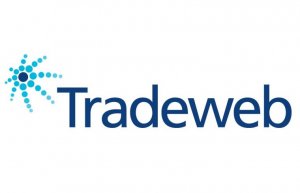Polkadot (DOT) solves pain points but scalability to 1 mil/sec is not live – Study
Parachains are not live on the Polkadot mainnet yet, but adoption trends can be observed from usage and behavior on the Substrate framework. This is a resource to analyze the expected adoption trends on the Polkadot mainnet.

Polkadot has been the object of an in-depth research report by crypto exchange’s EQONEX research arm, analyzing the evolution and adoption of the Polkadot protocol.
Although blockchain technology has provided a multitude of opportunities to revamp the financial ecosystem and for investors to participate in a new asset class, the ecosystem is plagued by three main issues: fragmentation (the lack of interoperability), governance, and scalability.
Richard Byworth, Chief Executive Officer at EQONEX, said: “Polkadot presents a strong investment opportunity given the technology was developed to address the issues inherent in blockchain. While some commentators are describing Polkadot as a challenge to Ethereum, we see it as a valuable next-generation ecosystem that has the potential to deliver enormous value, and this was our rationale for listing a Polkadot (DOT) token on the exchange and adding it to our Digivault custody offering”.
Claire Zhao, Blockchain Researcher at EQONEX and one of the authors of the report, commented: “The Polkadot project represents a paradigm shift in the world of blockchain technology by introducing a protocol which brings several game changers, including democratic governance, interoperability between multiple blockchains, and a highly modular and upgradeable blockchain development framework. Though not fully launched, Polkadot shows a tremendous amount of potential.”
First off, an introduction to Polkadot, a blockchain of blockchains. This protocol introduces mechanisms to govern blockchains in a decentralized manner in order to allow developers to construct specialized, custom-built blockchains for their projects.
As to the three pain points.
Polkadot connects independent blockchains into one unified network, including public, private, and consortium networks (interoperability).
Holders of the Polkadot token on the Relay Chain can participate in a sophisticated governance process, where they can propose changes via referenda, which covers topics such as deciding on payment changes in network fees (decentralized governance).
Polkadot is not fully live and does not have parachain and parathread capabilities. However, it can already support around 1,000 transactions per second, a significant improvement over Ethereum’s 13 transactions per second (scalability).
As to scalability, it is expected that Polkadot will be able to scale to over one million transactions per second, once parachains and parathreads have been implemented.
Parachains are not live on the Polkadot mainnet yet, but adoption trends can be observed from usage and behavior on the Substrate framework. This is a resource to analyze the expected adoption trends on the Polkadot mainnet.
The EQONEX Labs report explored the adoption of the Substrate framework as there have been 22 independent Substrate-based blockchains whose mainnet versions have been launched including Polkadot, Kusama, Darwinia, Centrifuge, Clover, and SORA.
Hundreds of dApps projects are built with Substrate or solutions that interact with Substrate-based blockchains, and will be fully compatible with the Polkadot ecosystem.
Currently, 89,260,416 accounts hold DOT on the Polkadot mainnet. As to DOT transactions, there has been an average daily on-chain transaction volume of 13.6 million DOT, with a spike to 194.8 million on August 18, 2020, when the transfer function of the DOT token was enabled.









